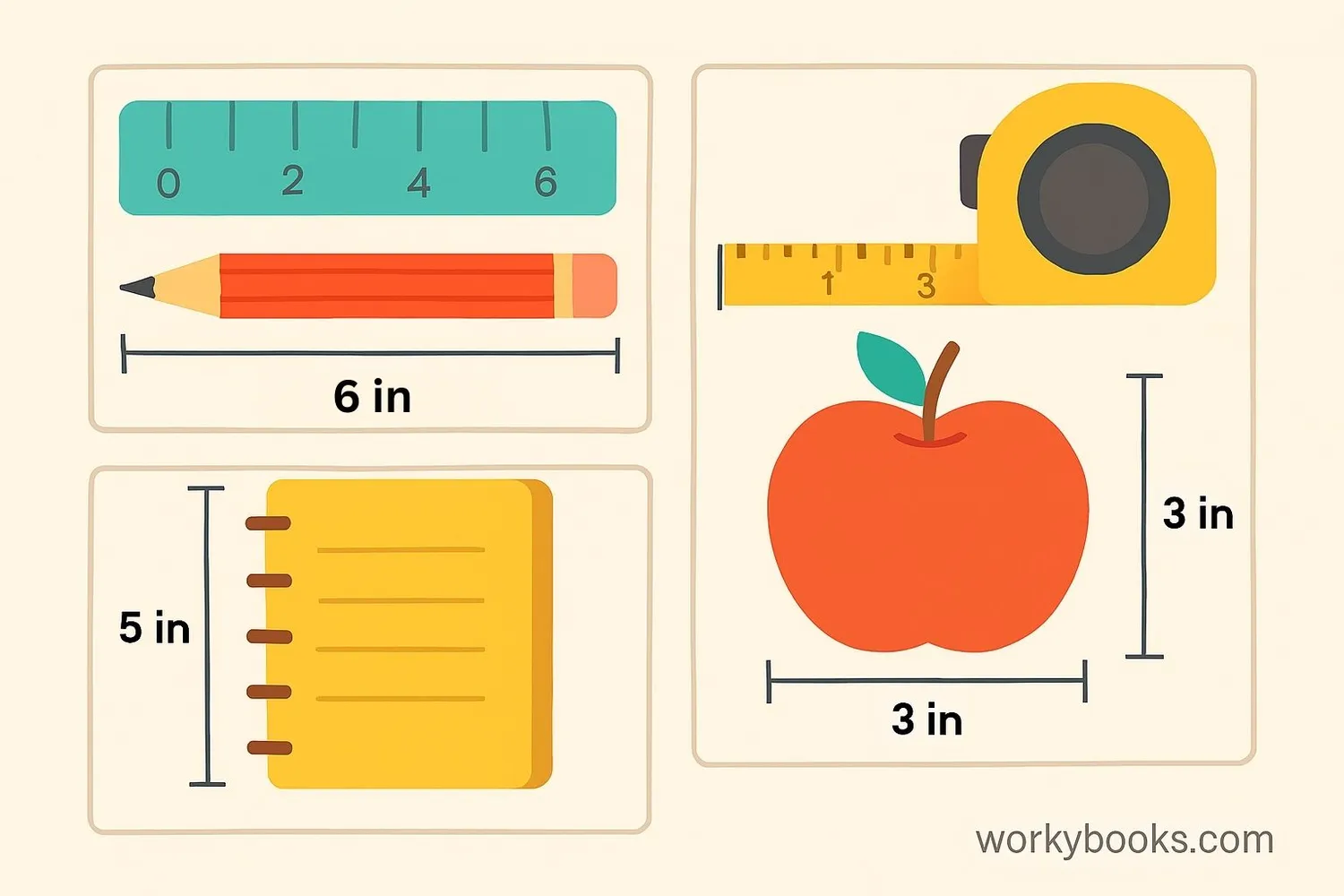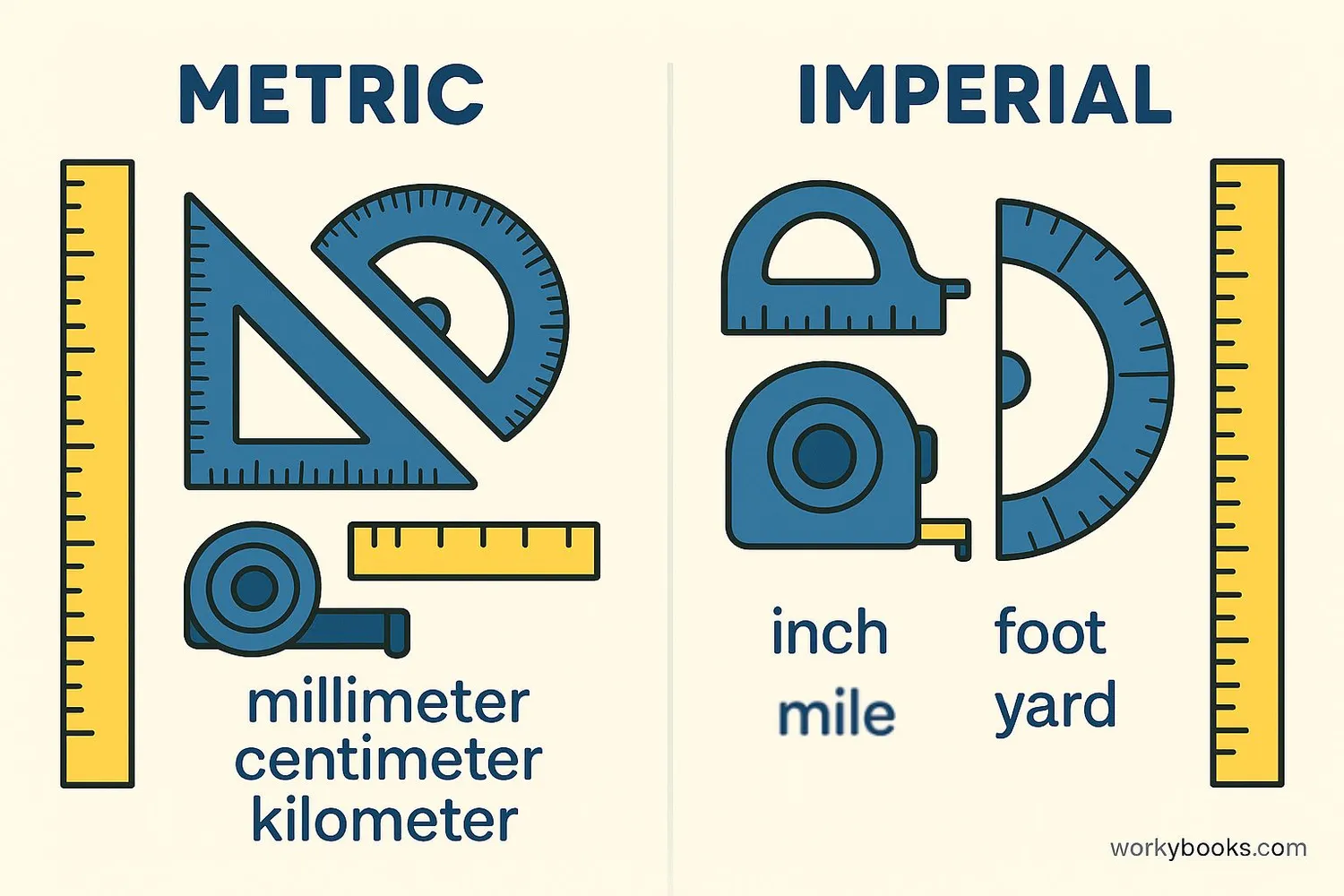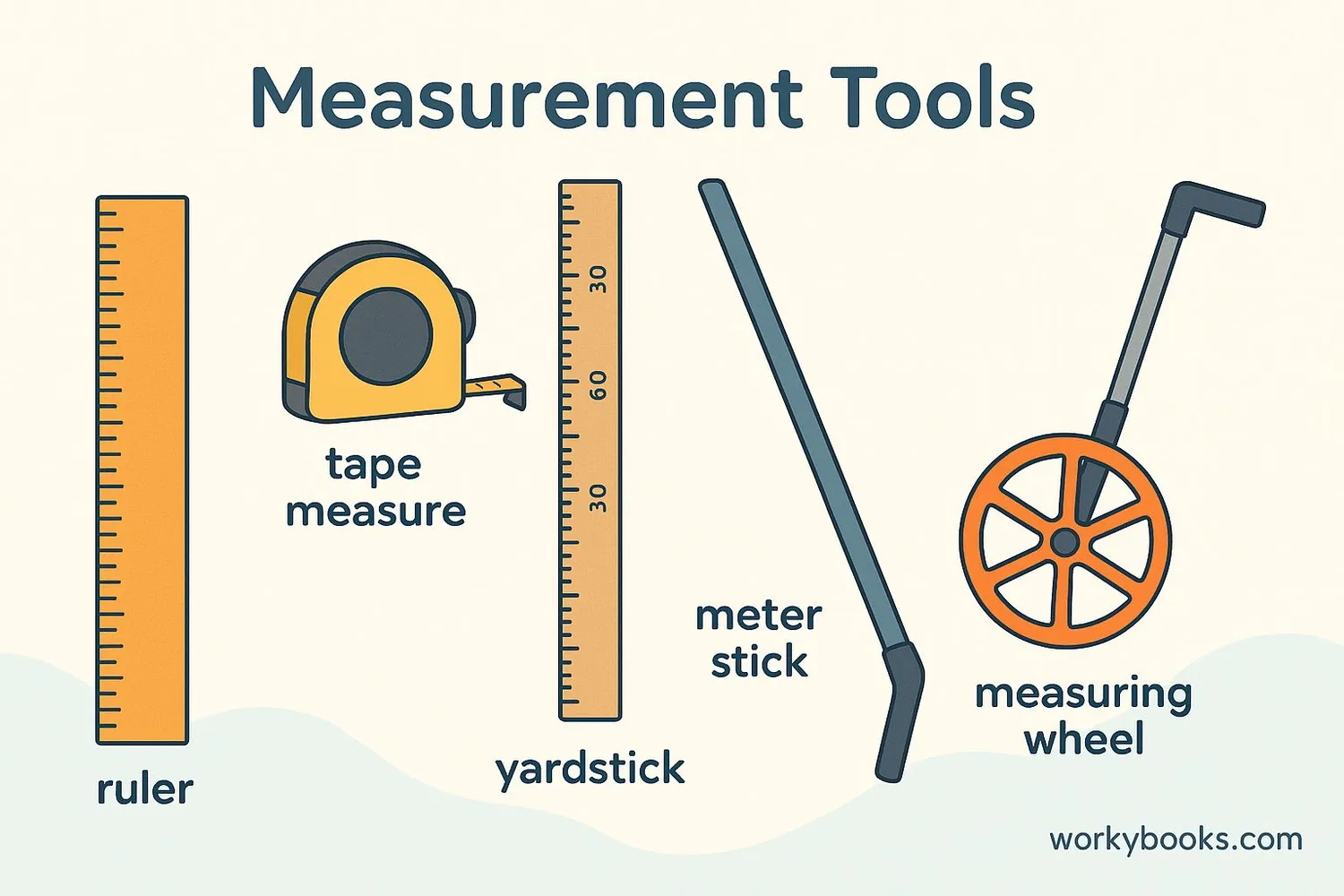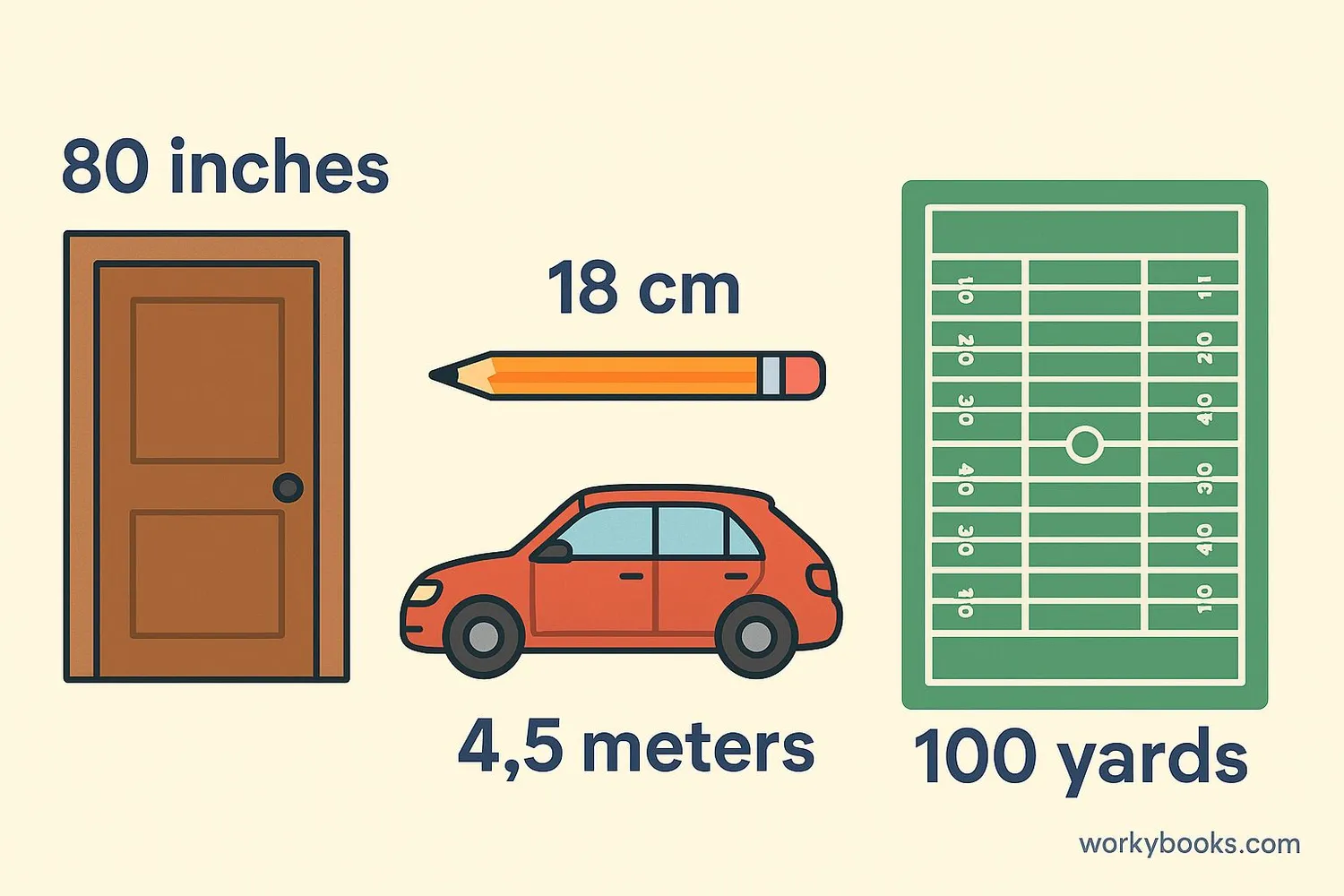Linear Measurement - Definition, Examples, Quiz, FAQ, Trivia
Learn about measuring length with easy explanations, examples, and interactive activities
What is Linear Measurement?

Linear measurement is the process of measuring the length of objects or the distance between points. It helps us answer questions like "How long is this pencil?" or "How far is the playground from our classroom?"
We use linear measurement every day - when we measure our height, the length of a room, or how far we can jump. Understanding measurement helps us describe the world around us with numbers instead of just words like "long" or "short."
Measurement is important in many jobs like construction, engineering, and science. Even artists use measurement to create balanced artwork!
Key Concept
Linear measurement tells us how long, tall, or far something is using standard units like inches, feet, centimeters, and meters.
Units of Linear Measurement

There are two main systems for measuring length: the metric system and the customary (imperial) system.
Metric System (used by most countries):
- Millimeter (mm) - about the thickness of a dime
- Centimeter (cm) - about the width of your pinky finger
- Meter (m) - about the length of a baseball bat
- Kilometer (km) - about 10 city blocks
- Inch (in) - about the length of your thumb from the tip to first joint
- Foot (ft) - about the length of your foot
- Yard (yd) - about the length of a baseball bat
- Mile (mi) - about 4 times around a running track
Conversion Relationships
Remember
When converting between units, you'll either multiply or divide based on whether you're converting to a larger or smaller unit.
Measurement Tools

We use different tools to measure length depending on what we're measuring and how precise we need to be:
Ruler - Used for measuring smaller objects like books or pencils. Usually shows inches and centimeters.
Tape Measure - A flexible ruler that can measure curved surfaces or longer distances. Used by tailors and carpenters.
Yardstick or Meter Stick - Longer than a ruler, used for measuring larger objects like furniture or room dimensions.
Measuring Wheel - Used to measure long distances like football fields or running tracks by rolling along the surface.
Digital Measuring Tools - Modern tools like laser measures that use technology to calculate distances accurately.
Measurement Tip
When measuring, always start at the zero mark, not the end of the tool! Some rulers have a small space before the zero line.
Real-World Examples

Let's look at some real-world measurement examples:
Example 1: A standard door is about 80 inches or 203 centimeters tall.
Example 2: A pencil is about 18 centimeters or 7 inches long.
Example 3: A car is about 4.5 meters or 15 feet long.
Example 4: A football field is 100 yards or 91.44 meters long.
Example 5: The distance around a standard running track is 400 meters or about ¼ mile.
Practice estimating measurements of objects around you, then use a ruler or tape measure to check your estimates!
Measurement Conversion Chart
| Inches | Feet | Centimeters | Meters |
|---|---|---|---|
| 1 in | 0.08 ft | 2.54 cm | 0.025 m |
| 12 in | 1 ft | 30.48 cm | 0.305 m |
| 36 in | 3 ft | 91.44 cm | 0.914 m |
| 39.37 in | 3.28 ft | 100 cm | 1 m |
Practice Tip
Try measuring your height in both inches and centimeters to see the relationship between the two measurement systems.
Measurement Practice Quiz
Test your measurement knowledge with this 5-question quiz. Choose the correct answer for each question.
Frequently Asked Questions
Here are answers to common questions about linear measurement:
Measurement Trivia
Discover interesting facts about measurement:
Ancient Measurements
Early measurements were based on body parts. A "cubit" was the length from elbow to fingertip, and a "foot" was literally based on the length of a person's foot. This caused problems because everyone's body parts were different sizes!
Metric System Origins
The metric system was created during the French Revolution in the 1790s. Scientists defined the meter as one ten-millionth of the distance from the North Pole to the Equator through Paris. Today, it's defined by the distance light travels in a vacuum.
Space Measurement
NASA uses metric measurements for all its space missions. The Mars Climate Orbiter was lost in 1999 because one engineering team used metric units while another used imperial units for calculations.
Longest Measurement
The longest distance between two points on Earth that can be measured is about 20,000 kilometers (12,427 miles). This is the distance between two opposite points on Earth, passing through the center.


